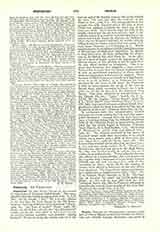

Pentecost (OF THE JEWS), FEAST OF, the second in importance of the great Jewish feasts. The term, adopted from the Greek-speaking Jews (Tob., ii, 1; II Mac., xii, 32; Joseph., “Ant.”, III, x, 6; etc.) alludes to the fact that the feast, known in the Old Testament as “the feast of harvest of the firstfruits” (Exod., xxiii, 16), “the feast of weeks” (Exod., xxxiv, 22 Deut., xvi, 10; II Par., viii, 13), the “day of firstfruits’; (Num., xxviii, 26), and called by later Jews ‘asereth or asartha (solemn assembly, and probably “closing festival”, Pentecost being the closing festival of the harvest and of the Paschal season), fell on the fiftieth day from “the next day after the sabbath” of the Passover (Lev., xxiii, 11). The interpretation of this passage was early disputed and at the time of Jesus Christ two opinions touching the exact day of the feast were held. Most doctors (and the bulk of the people) understood (on the force of Lev., xxiii, 7) the sabbath spoken of in verse 11 to be the first day of the unleavened bread, Nisan 15; whereas the Sadducees (later also the Karaites) held that the weekly sabbath falling during the Passover festivities was meant (Talmud, Treat. Menach., x, 1-3; Chagiga, ii, 4). Which opinion is more in accordance with the natural meaning of the passage, we shall leave undecided; the dissent is long since over, all Jews celebrating the Pentecost on the fiftieth day after Nisan 16. As the offering of a sheaf of barley marked the beginning of the harvest season, so the offering of loaves made from the new wheat marked its completion. This is no proof that Pentecost was originally a mere nature-festival; but it shows that the Mosaic legislation had in view an agricultural population, to whose special needs and disposition it was perfectly adapted. Since the close of Biblical times, an entirely new significance, never so much as hinted at in Scripture, has been attached by the Jews to the feast: the Pentecost is held to commemorate the giving of the Law on Mount Sinai, which, according to Exod., xix, 1, took place on the fiftieth day after the departure from Egypt. This view, admitted by several Fathers of the Church (St. Jer., “Epist.”, lxxviii, 12, P.L., XXII, 707; St. August., “Cont. Faust”, xxxii, 12, P.L., XLII, 503; St. Leo, “De Pent. Serm.,” I, P.L., LIV, 400), has passed into some modern Jewish liturgical books, where the feast is described as “the day of the giving of the Law” (Maimon. More Neb., iii, 41).
In accordance with this interpretation, modern Jews pass the eve in reading the Law and other appropriate Scriptures. Among them the feast lasts two days, a tradition dating from the difficulty which the Jews of the Diaspora found in ascertaining exactly what day the month begins in Palestine (Talmud, Treat. Pesach., lii; Rosh hashsh., v, 1). On the day of Pentecost no servile work was allowed (Lev., xxiii, 21). The oblation consisted of two loaves of leavened bread made from two-tenths of an ephah (about seven quarts and a fifth) of flour from the new wheat (Lev., xxiii, 17; Exod., xxxiv, 22). The leavened bread could not be placed on the altar (Lev., ii, 11), and was merely waved (D. V., “lifted”; see Offerings); one loaf was given to the High Priest, the other was divided among the priests who ate it within the sacred precincts. Two yearling lambs were also offered as a peace-offering, and a buck-goat for sin, together with a holocaust of seven lambs without blemish, one calf, and two rams (Lev., xxiii, 18-19). According to Num., xxviii, 26-31, the number of victims to be offered in holocaust on that day differs from the above. The Jews of later times regarded the two enactments as supplementary (Jos., “Ant.”, III, X, 6; Talmud, Treat. Menach., iv, 2, 5). The feast was an occasion for social and joyful gatherings (Deut., xvi, 11) and we may infer from the New Testament that it was, like the Passover, attended at Jerusalem by a great homecoming of the Jews from all parts of the world (Act., ii, 5-11).
CHARLES L. SOUVAY

